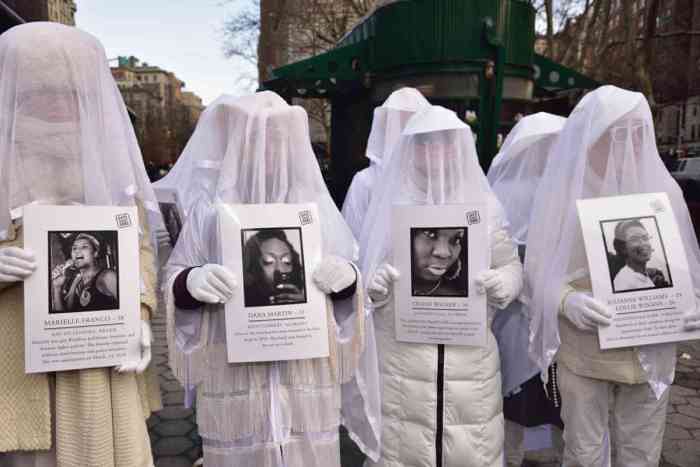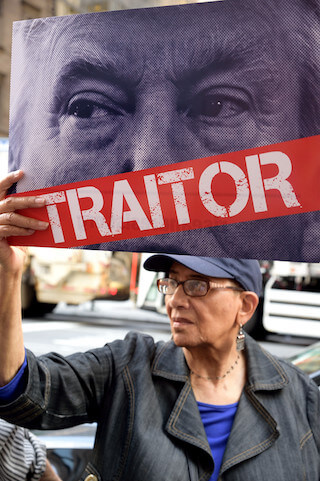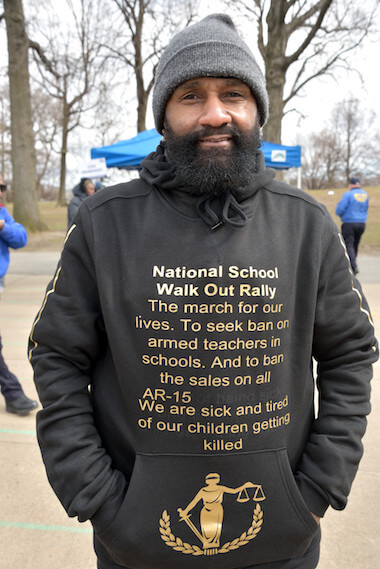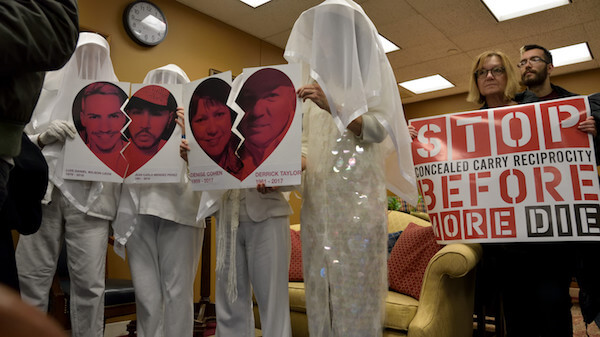Longtime activist Ken Kidd, who launched the drive to have resistance groupslead the pride parade in June, got word of HOP’s decision on March 28. | DONNA ACETO
The organization that produces New York City’s pride parade, rally, and related events has agreed to allow groups eager to confront the Republican Party’s control of the federal government near the front of the June 25 pride parade.
“I’m extremely proud of the people who came out to raise their voices about this, and I think it’s emblematic of the people who are going to show up proudly on June 25,” said Ken Kidd, who was the lead organizer of the effort to get the resistance groups at the front of the parade.
Following a March 28 meeting with Heritage of Pride (HOP), Kidd told Gay City News that the traditional first contingent, the Sirens Women’s Motorcycle Club of New York City, will lead the parade, as they have since 1986, followed by the parade’s grand marshals, who have not yet been announced, the HOP float, and then the resistance groups.
After pushback a week ago, June pride parade organizers say protesters can march up front
The groups who wanted in to the parade at the front include Rise + Resist, ACT UP, United Thru Action, and Gays Against Guns. These groups have held recent protests in New York City and they attended the protests in Washington, DC, on January 20 when Donald Trump was inaugurated and the Women’s March on Washington on January 21. The resistance groups expect to be joined by other organizations on June 25.
Members of these groups first approached HOP roughly a month ago and eventually met resistance themselves from HOP. At a March 13 HOP general meeting, staff and volunteers did not say yes or no to the request, but signaled a willingness to talk. But at a March 21 meeting of HOP’s parade committee, the organization was clearly pushing back.
“Our current march route is at capacity,” said Sue Doster, who heads strategic planning for HOP, at the March 21 meeting. “You can’t add a half million people to that march and keep it safe for everyone.”
Sue Doster, who heads strategic planning for HOP, had in a meeting last week raised significant concerns about the resistance groups’ demand. | DONNA ACETO
Members of the resistance groups were not above telling HOP that they would be in the parade regardless of HOP’s decision.
“One way or another, these resistance groups are going to take over this parade,” Cathy Marino-Thomas, the former head of Marriage Equality who is currently active in Gays Against Guns, told the HOP leadership at the March 13 meeting. “I predict that if there is no give here, this will be the first time there will be arrests.”
In line with the many LGBQ groups that have abandoned, some explicitly, the radical roots of the movement, HOP has generally wanted the annual event to be seen as a celebration and less of a march, which was its original form. The parade, which always steps off on the last Sunday in June, memorializes the 1969 Stonewall riots that began the modern LGBTQ rights movement.
At a March 13 HOP meeting, Cathy Marino-Thomas had warned that resistance groups would march whether or not sanctioned by the parade organizers. | DONNA ACETO
At the meetings, some HOP members asserted that the current parade is merely a different form of protest and insisted that it be called a march and not a parade. Some of the members of the resistance groups that were seeking access to the parade are old hands at protest who have observed the change in the annual event with some dismay.
The high profile sponsors have also irritated some people. While corporate floats and contingents are a dominant and to some an offensive presence, the great majority of contingents in the parade remain small community groups
During the back and forth between HOP and the resistance groups, Kidd pushed back against some of his colleagues who attempted to expand the demands by including an end to corporate sponsors and a reduced police presence. Ultimately, he commended HOP.
“I think that they really did listen to us,” he said.
In a statement, HOP wrote, “While no one group owned the resistance hashtag, it was clear that those in the room were capable of rallying peers to take action. This is why we feel confident in enabling the leadership present in those conversations to band together in the interest of reaching their goal of a strong message of resistance to the current political leadership… Recognizing these groups’ request that a strong element of non-celebratory protest be included in the front section of the March, we will place the collective group within the lead section of the 2017 event.”





































